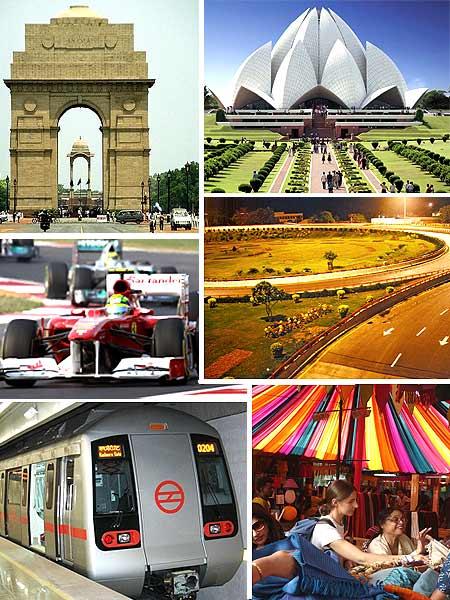
While the British sealed it as the capital of modern India, Delhi has for centuries been the power and nerve centre of the regimes that ruled the country, each one of them leaving behind an imprint on the heritage of the historic city.
So, while the British brought back the capital to Delhi only 100 years ago, the city's role as the political pivot dates right back to over 3000 years, much before the trace of recorded history can be found.
As New Delhi celebrated 100 years of its existence on Monday, rediff.com takes a look at some of the landmarks that define the megacity.
images...
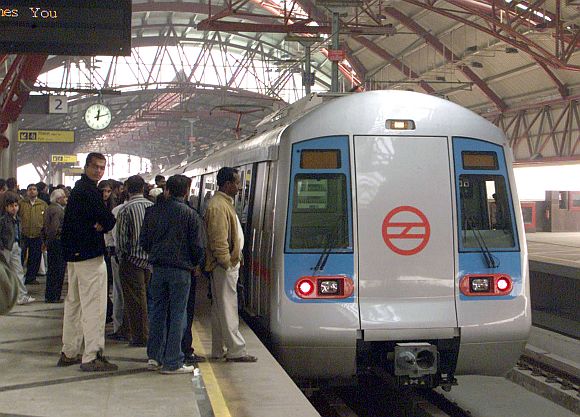
The Delhi Metro is one of the largest metro rail networks in the world covering Delhi, Noida, Gurgaon and Ghaziabad in the National Capital Region, and has turned out to be the megacity's identity, putting to rest to a large extent the city's traffic problems.
As of November 2010, DMRC operates around 2,700 trips daily between 6:00 and 23:00 running with an interval of 2 minutes 30 seconds between trains at peak frequency.
The metro has an average daily ridership of 1.8 million commuters, and, as of July 2011, had carried over 1.25 billion commuters since its inception.
The Delhi Metro Rail Corporation has been certified by the United Nations as the first metro rail and rail-based system in the world to get "carbon credits for reducing greenhouse gas emissions" and helping in reducing pollution levels in the city by 6.3 lakh tonne every year.
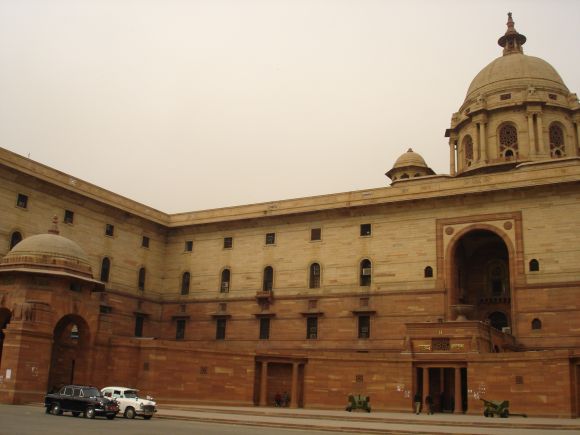
Raisina Hill is an area of Lutyens' Delhi, New Delhi, housing India's most important government buildings, including Rashtrapati Bhavan, the official residence of the President of India and the Secretariat building housing the Prime Minister's Office and several other important ministries.
It is surrounded by other important buildings and structures, including the Parliament of India, Rajpath, Vijay Chowk and India Gate.

Being the capital of the world's largest democracy, Delhi is the nerve-centre of India's politics.
The official residences of the prime minister, all the members of Parliament and headquarters of the national political parties are situated in the city.
The city also houses most of the major embassies in the country that define India's diplomatic ties with the world.
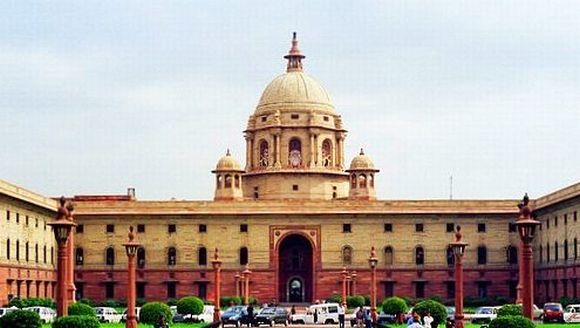
Delhi also houses the Supreme Court of India, the highest judicial forum and final court of appeal as established by Part V, Chapter IV of the Constitution of India.
According to the Constitution of India, the role of the Supreme Court is that of a federal court and guardian of the Constitution.

Father of the Nation Mahatma Gandhi's memorial at Rajghat is also situated in the city.
It was originally designed to reflect the simplicity of Mahatma Gandhi's life. In recent years, it has become customary for foreign dignitaries visiting India to pay their respects to Gandhi at the Rajghat by laying flowers or wreaths on the platform.
A commemorative ceremony is held every Friday and prayer sessions are held at the Rajghat on Gandhi's birth and death anniversaries.
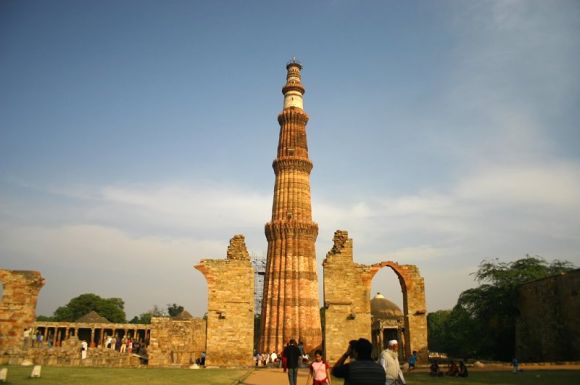
The Qutub Minar, one of the most important historical installations in Delhi, is constructed with red sandstone and marble, and is the tallest minaret in India, with a height of 72.5 meters (237.8 ft), contains 379 stairs to reach the top,and the diameter of base is 14.3 meters where as the last store is of 2.7 meters.
This construction of thisUNESCO World Heritage Site was commenced by Qutb-ud-din Aibak in 1199 A.D and was completed by Iltutmish.
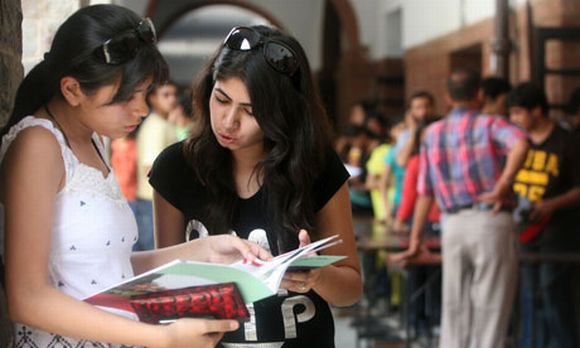
The city can also boast of housing some of the most prestigious universities in the country like the Delhi University, the Jawaharlal Nehru University and the Jamila Milia Islamia.
Every year, thousands of students from across the globe flock to the city to pursue higher education. Countless eminent personalities have been alumni of different prestigious colleges/institutions located in the city.
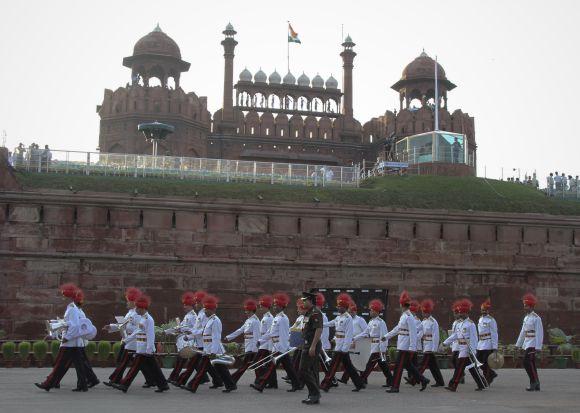
The Red Fort is a 17th century fort complex constructed by the Mughal emperor Shah Jahan in the walled city of Old Delhi that served as the residence of the Mughal Emperors.
The Red Fort is one of the most popular tourist destinations in Old Delhi, attracting thousands of visitors every year.
The fort is also the site from which the Prime Minister of India addresses the nation on 15 August every year. It also happens to be the largest monument in Old Delhi.
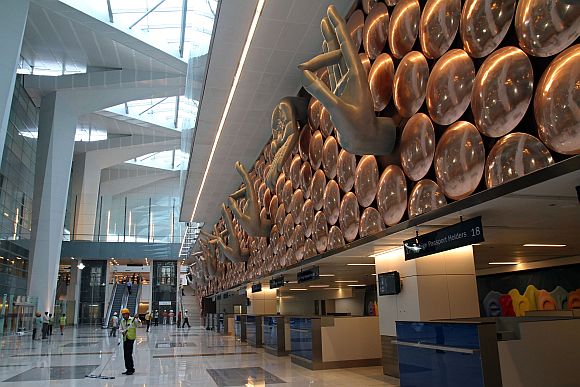
The state-of-the-art Terminal 3 of the Indira Gandhi International Airport in Delhi is one of the world's largest passenger terminals.
It occupies 5.4 million sq ft, with a capacity to handle 34 million passengers annually.

The Dilli Haat is an open-air food plaza cum craft bazaar located in Delhi, run by the Delhi Tourism and Transportation Development Corporation and is a popular destination of tourists and Delhites.
Dilli Haat has permanent food stalls representing each state of India, giving a complete variety of tastes available all over India, while the crafts stall change every 15 days.

The city also has Jama Masjid, one of the oldest and largest mosques in the country.
Commissioned by the Mughal Emperor Shah Jahan in the year 1644 AD and completed in the year 1658 AD, Jama Masjid lies at the origin of a very busy central street of Old Delhi, the Chawri Bazar Road.
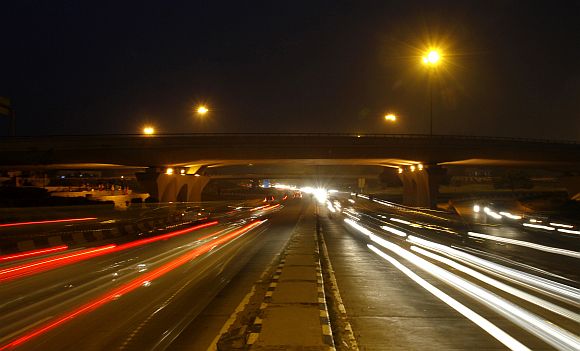
Delhi can also boast of one of the most well-planned transport set ups in the country.
With abundant sprawling flyovers and broad roads, traffic congestion has been reduced remarkably in the megacity.

Connaught Place is one of the largest financial, commercial and business centers in Delhi. It is often abbreviated as 'CP' and houses the headquarters of several Indian firms.
Its surroundings occupy a place of pride amongst the heritage structures of the city. It was developed as a showpiece of Lutyens' Delhi featuring a Central Business District. Named after the Duke of Connaught, the construction work was started in 1929 and completed in 1933.
It was renamed as the Rajiv Chowk after the late Prime Minister Rajiv Gandhi.
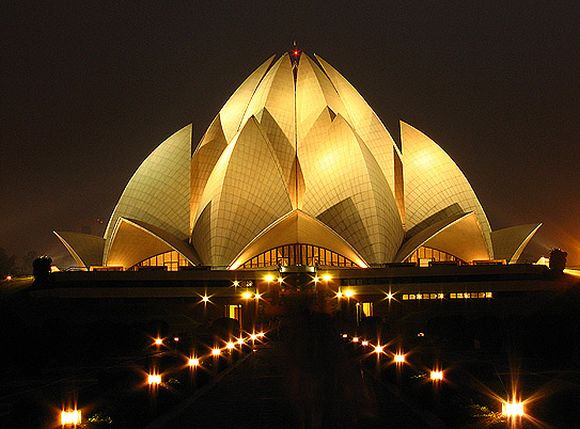
The Bahai House of Worship in Delhi, popularly known as the Lotus Temple due to its flowerlike shape, is a prominent attraction in Delhi.
It was completed in 1986 and serves as the Mother Temple of the Indian subcontinent. It has won numerous architectural awards and been featured in hundreds of newspaper and magazine articles.
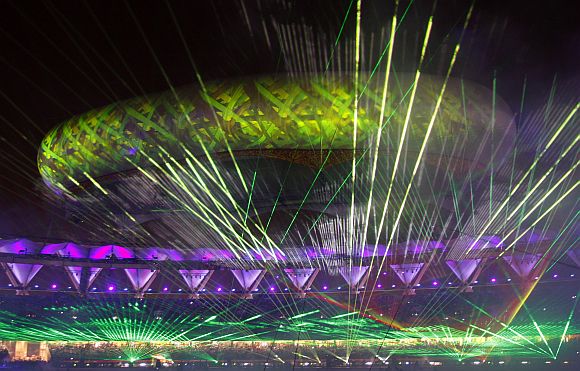
The 2010 Commonwealth Games organised in New Delhi was known for both good and bad reasons alike.
While the city won accolades for organising one of the largest multi-sport events in the world, with a total of 6,081 athletes from 71 Commonwealth nations and dependencies competing in 21 sports and 272 events, it also faced widespread criticism -- first for the slow pace of pre-event work, and second for the role of the organisng committee chief Suresh Kalmadi, being accused of corruption charges and currently lodged in the Tihar jail.

The first Indian Grand Prix, the Formula One World Championship Race, was organised at the Buddh International Circuit in Greater Noida near Delhi in November.
The much-anticipated race brought India to the global stage of F1 racing, and the inaugural race was won by Germany's Sebastian Vettel.